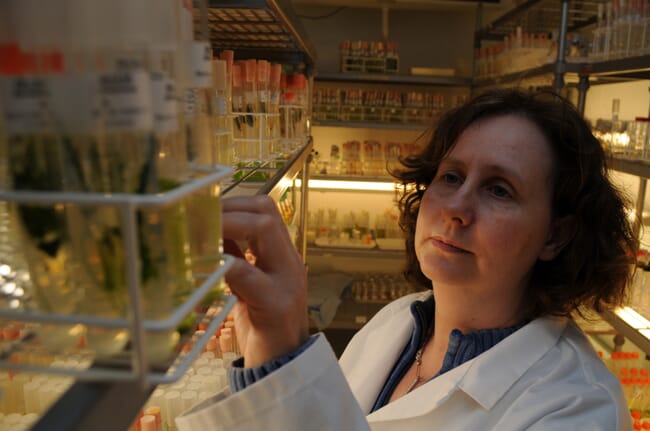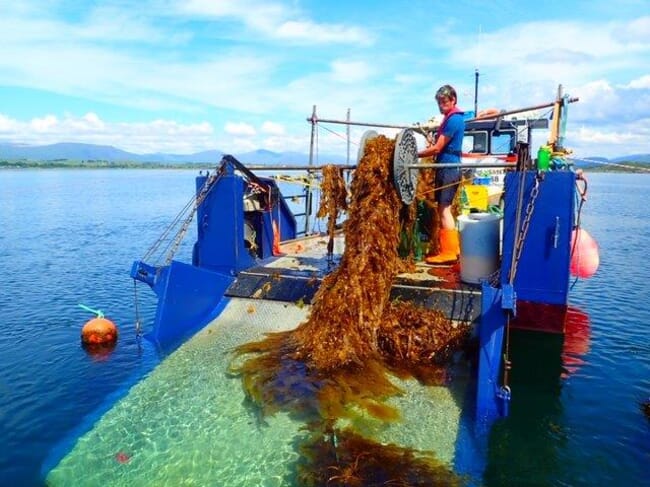
Climate change is the biggest issue of our time. It is affecting everyone and every sector in different ways and, so, it is incumbent on us all to work together to make a collective change, in whatever way we can.
Next year, all eyes will be on Scotland as we host the COP26 UN conference on climate change in Glasgow – this is a once-in-a-lifetime opportunity to showcase the work already underway and our potential as leaders in innovation. The meeting is set to be the most important climate change summit since the 2015 Paris agreement, attracting around 30,000 delegates.
While there is no one-size-fits-all solution to the challenge, sustainability is rightfully rising to the top of the agenda in aquaculture. Among the wide range of pioneering technologies, processes, and products emerging from the sector, seaweed is perhaps one of the lesser-known tools in our armoury that could play an important role in tackling the challenges ahead.
As well as being farmed for human consumption, animal feed and biofuels, seaweed plays a role in carbon sequestration. In short, carbon is stored in the tissues of seaweed and, when plants die and sink to the ocean floor, the carbon dioxide from the atmosphere is buried along with the biomass.
According to one international study, 48 million km2 of the world’s seas and oceans could be suitable for growing seaweed. By using just 0.001 percent of that area, we could offset the carbon emissions from the entire aquaculture industry.
There is a huge opportunity for increased seaweed cultivation in Scotland, for both commercial and environmental benefit, using the natural environment to our advantage alongside our expertise in aquaculture and innovation.
For example, seaweed can be a valuable element of a multi-trophic aquaculture system, a sustainable circular production model which is increasingly being used in Scotland. The process mimics the nutrient flows in natural systems, with seaweed cultivated alongside shellfish such as mussels, oysters and scallops, absorbing some of the otherwise wasted nutrients.

© SAMS
Around 95 percent of current seaweed production takes place in Asia, but there are a number of research and development projects currently underway to explore the opportunities seaweed farming presents and to drive the sector’s growth in Scotland.
One study, the H2020 project IMPAQT (Intelligent Management Systems for Integrated Multi-Trophic Aquaculture - grant agreement no. 774109) is bringing IT into aquaculture, using a network of sensors to generate real-time data about environmental conditions. As well as providing information about temperature, light levels and pH levels on current seaweed farms, we can use this technology to identify trends and assess the feasibility of new sites.
The adoption of new technology can also help the sector to overcome some of the barriers to growth – for example, by gathering valuable information such as light levels in neighbouring waters – to help producers to make informed decisions about the location and set-up of future sites. Technology is undoubtedly becoming a necessary investment to help our aquaculture industry to grow sustainably.
Climate change is, of course, a global challenge but by sharing knowledge from each of these research projects, from company to company, the aquaculture industry can seize new opportunities to improve sustainability. The role of the humble seaweed in mitigating environmental impacts is just one piece of a much larger puzzle, but there is a clear opportunity to integrate it into our aquaculture sector, and Scotland’s wider plans to cut carbon emissions, for collective benefit.
Prof Michele Stanley is highlighted the role seaweed can play as part of a wider discussion around sustainable food from land and sea at Scotland’s Countdown to COP26 conference, hosted by the Scottish Aquaculture Innovation Centre (SAIC) and its sister innovation centres, earlier this month.


